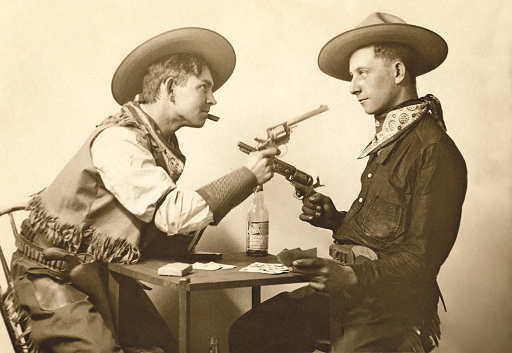2 More on Walzer’s theory of self-defence
Walzer’s key point is that soldiers are ‘dangerous men’. On his line of argument, equal liability comes from equality of threat; what it is that makes it permissible for me to kill you is that you threaten me. Even if you threaten me through no decision, let alone fault, of your own, you still threaten me. Sometimes, in the literature, this is called ‘ material non-innocence ’. The idea is that I have a right to defend myself against a lethal threat; enemies at war pose a lethal threat to each other; consequently they have a right to kill each other. Walzer says:
He has joined the army because he thinks his country must be defended. … He can be personally attacked only because he already is a fighter. He has been made into a dangerous man, and though his options may have been few, it is nevertheless accurate to say that he has allowed himself to be made into a dangerous man.
A simple view might go as follows: in a war, there are two sides. On one side, one set of combatants pose a threat to their enemy or counterpart combatants. And this is reciprocated: their enemy combatants pose a threat back. Each side poses a threat to the other, because combatants on one side try to kill combatants on the other side. Because of this, combatants on one side are liable to be killed by combatants on the other side.
On this view, if you pose a lethal threat, then you are liable to be killed. Look at Figure 1; although this image does not concern war, it makes the case dramatically.
The two cowboys aim their guns at each other: each poses a lethal threat to the other. This situation is sometimes known as a ‘Mexican stand-off’. Does the fact that each poses a lethal threat to the other tell us all we need to know about the liability of each to defensive killing? Is it necessarily true that the people facing each other are, morally speaking, equal, and equally liable to defensive killing by virtue of the fact that they pose a lethal threat, or could it be that one is liable to killing and the other is not?
Activity 4
Take a moment to consider option A and option B below. Think through the reasons for adopting each option, and make a mental note about which you agree with.
- A. Both cowboys pose a lethal threat to the other. So each is liable to defensive killing.
- B. Both cowboys pose a lethal threat to the other. But whether each is liable to defensive killing depends on other facts about their situation.
Discussion
If you agree with option A, you are in line with Walzer’s position. If you agree with option B, you are not so clearly in line. Either way, you should think about the reasons for your view – either that posing a lethal threat makes you liable for killing, or that the link is not so strong.

